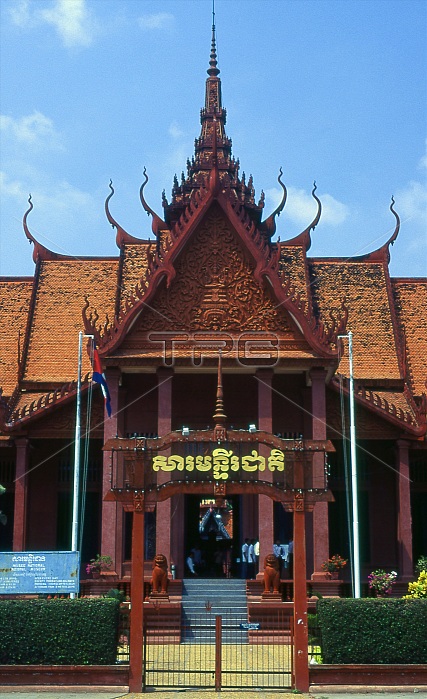
The National Museum, housed in a red pavilion built in 1918, holds a collection of Khmer art including some of the finest pieces in existence. Exhibits include a 6th century statue of Vishnu, a 9th century statue of Shiva, and the famous sculpted head of Jayavarman VII in meditative pose. Particularly impressive is a damaged bust of a reclining Vishnu which was once part of a massive bronze statue found at the Western Mebon Temple in Angkor. Phnom Penh lies on the western side of the Mekong River at the point where it is joined by the Sap River and divides into the Bassac River, making a meet place of four great waterways known in Cambodian as Chatomuk or 'Four Faces'. It has been central to Cambodian life since soon after the abandonment of Angkor in the mid-14th century and has been the capital since 1866. An elegant Franco-Cambodian city of broad boulevards and Buddhist temples, it was considered one of the jewels of Southeast Asia until Cambodia became involved in the Second Indochina War in 1965. Ten years later victorious Khmer Rouge forces captured the city. These extreme left-wing communists, led by the secretive Pol Pot, ordered the immediate evacuation of Phnom Penh causing up to two million deaths during the period 1975-79. During this time the city was abandoned and fell into ruin. Since the defeat of the Khmer Rouge in 1979 it has been gradually recovering, but still bears scars of a terrible past.
| px | px | dpi | = | cm | x | cm | = | MB |
Details
Creative#:
TOP27283645
Source:
達志影像
Authorization Type:
RM
Release Information:
須由TPG 完整授權
Model Release:
No
Property Release:
No
Right to Privacy:
No
Same folder images:

 Loading
Loading